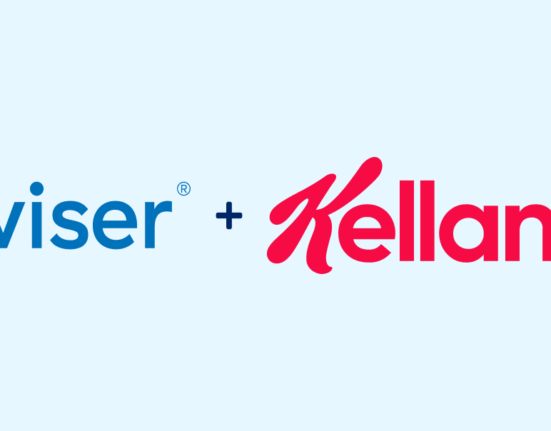A well-curated retail assortment bridges the gap between customer preferences and demand for the products offered, ensuring that each item in your inventory adds value to the customer and your business. Moreover, an effective assortment strategy allows retailers to stand out in the fiercely competitive retail landscape, providing a unique and memorable shopping experience.
The trick lies in offering the right mix of products that not only intrigue and attract customers, but also stimulate their purchase decisions. With an optimized retail assortment strategy, focusing on factors such as understanding customer preferences, analyzing market trends, and optimizing inventory management, you can significantly enhance your retail operations and drive business success.
Steps to Build a Better Retail Assortment Strategy
An efficient and effective assortment is paramount to retaining customers and driving profits. A well-curated product mix not only meets the diverse needs and preferences of your audience, but also positions your brand as a reliable provider of choice.
Here are some valuable insights and practical steps on how to enhance your retail assortment, ensuring it resonates with evolving consumer trends and stands out in a competitive marketplace.

No. 1: Identify Your Target Market
To build an effective retail assortment strategy, you first need to identify who your target market is. Understand the demographics, psychographics, and buying behavior of your potential customers.
What age group are they in? What are their interests and preferences? What kind of products are they likely to buy?
Collecting this information will provide you with valuable insights to curate an assortment that caters to the needs and desires of your target market, driving customer satisfaction and ultimately, sales.
No. 2: Evaluate Your Current Assortment
Once your target market is clearly defined, it’s essential to analyze your existing product mix.
Ask yourself, does your current assortment align with your customers’ preferences and needs? Do you offer enough variety to maintain customer interest and stimulate impulse buys? Reviewing sales data, customer feedback, and product performance can aid in this evaluation.
It is crucial to continuously improve and adjust your assortment based on these insights to both maximize sales and maintain relevance in the ever-changing retail landscape.
No. 3: Incorporate Customer Feedback
The feedback loop from your customer base is a treasure trove of actionable insights. Ensuring that customer feedback, both positive and negative, is embedded in your assortment strategy can significantly drive its effectiveness.
Listen to what your customers are saying about your products – which items do they love, and which ones do they believe need improvements? Are there any products they’d love to see in your assortment?
Utilizing social media, customer surveys, and review platforms can facilitate the collection of this feedback. Integrating these insights into your retail assortment strategy allows for dynamic adaptation to customer needs and expectations, leading to increased customer loyalty and sales.
No. 4: Apply Data Analytics
In the age of information, leveraging data analytics can add significant value to your retail assortment strategy.
By analyzing sales trends, customer purchasing behavior, and market patterns, you can make informed decisions about which products to include in your assortment. Data analytics can help identify top-selling items, seasonal trends, and underperforming products.
Moreover, predictive analytics can forecast future sales trends, allowing for strategic assortment planning. The insights derived from data analytics can guide you toward a more targeted and customer-centric assortment, potentially leading to increased sales and customer satisfaction.

No. 5: Regularly Revisit and Update Your Strategy
An effective retail assortment strategy is not a one-and-done endeavor.
The retail landscape is constantly changing due to evolving consumer behavior, technological advancements, and market dynamics. Regular reviews of your retail assortment strategy are essential to ensure it remains current, relevant, and aligned with your business objectives.
Additionally, updating your strategy periodically allows you to respond swiftly and effectively to any shifts in the market. Consistent evolution of your strategy not only fosters a competitive edge but also enhances customer satisfaction, loyalty, and ultimately, your bottom line.
The Role of Technology in Retail Assortment
Retail analytics tools have ushered in a new era of precision and efficacy in the retail industry. These sophisticated tools harness the power of data and analytics to optimize inventory, drive customer engagement, and enhance overall business performance.
By capturing and analyzing customer data, purchase patterns, and market trends, retailers can make informed decisions regarding product assortment, pricing strategies, and promotional activities. The ultimate goal is to increase sales and profitability while delivering an exceptional customer experience.
Wiser’s Retail Execution Management product is designed to help brands, retailers, brokers, and distributors optimize their retail assortment, among other use cases. By leveraging advanced analytics and real-time insights, it enables businesses to evaluate product performance across different retail channels. This helps ensure that the right product mix is available to the right customer at the right time, maximizing sales and profitability.
Additionally, this solution provides the ability to track brick-and-mortar competitor activity, so you can make informed strategic decisions and maintain a competitive edge in the marketplace. With Wiser’s Retail Execution Management, your retail assortment optimization becomes a strategic advantage, rather than a challenge.
Building a better retail assortment strategy is a continuous process that requires regular review and adjustment. Remember, market trends, customer preferences, and competition can change quickly.
Examples of Successful Retail Assortment Optimization
Assortment optimization is the key to creating an outstanding customer experience while maximizing profitability. It involves strategically choosing what products to stock, in what quantities, and at what locations, by analyzing customer data, market trends, and inventory costs.
Here are some real-world examples of successful retail assortment optimization to gain insights into how leading brands have leveraged different strategies to drive business growth.
- Focused Assortment Strategy: Trader Joe’s employs this strategy effectively, offering a limited array of exclusive products, about 80 percent of which are in-house brands. This strategy has helped them differentiate themselves in crowded markets, creating a unique shopping experience.
- Broad Assortment Strategy: Walmart is a classic example of this approach. They offer a wide variety of products across numerous categories. This “one-stop-shop” strategy attracts customers who appreciate the convenience of finding nearly everything they need in one place.
- Deep Assortment Strategy: Home Depot uses this strategy by offering a large number of items within each product category. This is particularly beneficial for customers seeking specific items for home improvement projects.
- Customer-centric Assortment Strategy: Amazon uses data-driven insights to personalize product recommendations, demonstrating a customer-centric approach. This strategy has been key to their success, with personalized recommendations driving a significant portion of their revenue.
- Dynamic Assortment Strategy: Zara, a fast-fashion retailer, uses a dynamic assortment strategy. They continually update their product range based on fashion trends and customer preferences, ensuring their offerings stay relevant and fresh.
Taking Your Retail Assortment Strategy to the Next Level
A well-devised retail assortment strategy is not just about your stores offering a variety of products. It’s about understanding the customers’ needs and aligning your inventory with their desires and expectations. Retailers who prioritize customer-centric decisions, backed up by data-driven insights, are more likely to succeed in this competitive market.
Technology plays a significant role in shaping today’s retail assortment strategies. Leveraging data analytics and AI can help retailers understand customer preferences, forecast trends, and optimize their product mix.
Building a better retail assortment strategy is a continuous process that requires regular review and adjustment. Remember, market trends, customer preferences, and competition can change quickly. Therefore, staying adaptable and receptive to change is imperative. To stay ahead, make your retail assortment strategy a living strategy that evolves with your customers and the market.
Visit Wiser.com today to learn more about Retail Execution.














